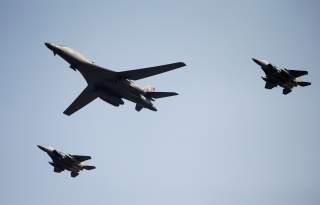The Hanoi Summit – We Asked Christopher Lawrence What Happens Next in U.S.-North Korea Relations
"Going forward, Biegun’s team should zero-in on achieving tangible nuclear rollback steps at Yongbyon during the remainder of Trump’s current term."
Editor’s Note: Looking for more opinions on where we go after the Hanoi summit? Check out all 80 expert takes on where U.S-North Korea relations go next here.
A postmortemnarrative has emerged in nonproliferation circles since the Hanoi summit collapsed. It suggests that President Trump was about to sign a “bad deal” with North Korea, but thankfully the “adults in the room” talked him out of it. That “bad deal,” it is believed, would have squandered too much sanctions leverage in exchange for the dismantlement of outdated facilities at Yongbyon, while leaving North Korea’s clandestine enrichment facilities intact. Pundits and former diplomats have feigned sighs of relief that the President is now reaching the limits of top-down diplomacy.
This narrative illustrates the slippery magic of American nonproliferation discourse. Less than a year ago, the idea that North Korea would place the heart of its nuclear program on the table would have been unthinkable. But after Kim Jong-un made the offer last fall and Stephen Biegun’s State Department team began adding credibility to it, disbelief then segued imperceptibly into dismissal. Nonproliferation analysts who have obsessively watched activities at Yongbyon for the last decade suddenly started describing it as a “low bar” that Trump might have to “settle for” if he wants to bring something tangible home from Hanoi.
But a deal to dismantle Yongbyon would be anything but a “low bar.” As I have argued elsewhere, North Korea’s Yongbyon reactors are probably the only place where it can produce plutonium and Tritium, and if the regime’s goal were to target the United States with a nuclear-tipped ICBMs indefinitely, it would be very reluctant to give up that capability. Eliminating Yongbyon would, therefore, curtail North Korea’s future capabilities, while providing insight into the regime’s long-term nuclear intentions, adding credibility to the prospect of further nuclear rollback in the future. This is precisely what Trump needs before the end of his term if he wants his diplomacy with North Korea to amount to anything.
The “low-bar” discourse likely helped set the stage for the failure in Hanoi by encouraging the U.S. team to demand access to North Korea’s entire fissile material complex in a single summit. This “all or nothing” approach is exactly what won’t work in engaging North Korea, because if the regime gives up the majority of its bargaining chips early in the process, it cannot rationally expect the United States to follow through on the promise of better relations in the future.
Going forward, Biegun’s team should zero-in on achieving tangible nuclear rollback steps at Yongbyon during the remainder of Trump’s current term. This would not be a “low bar,” but a key first step in a graduated nuclear rollback process that would extend over several years.
Christopher Lawrence is a physicist and a nuclear security scholar. He is currently a fellow at Harvard’s Kennedy School of Government, where he studies the history of U.S. engagement with North Korea.
Image: Reuters

